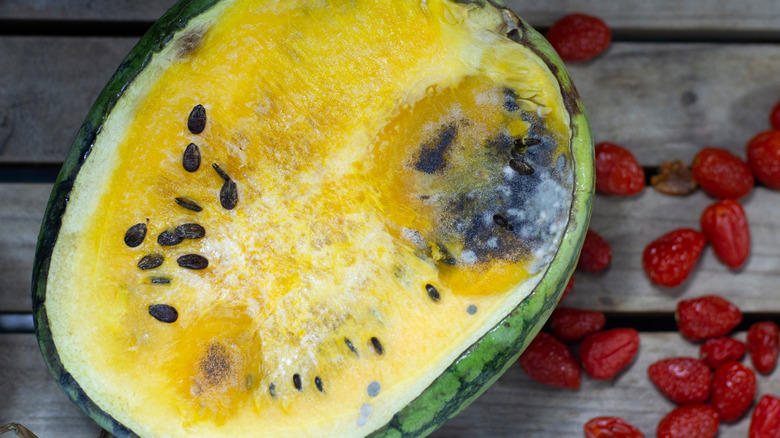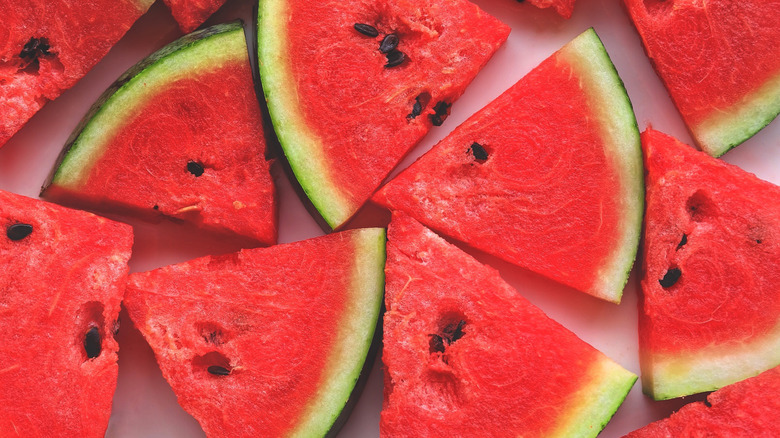How To Tell If Watermelon Has Gone Bad
Everyone has their favorites when it comes to fruits, but there is something that is universally beloved about the magnificent watermelon. Scientifically known as "Citrullus lanatus," this sweet and succulent delight is native to Africa (via Britannica), with more than 1,200 varieties that are currently cultivated around the world (via Producepedia). While it is almost synonymous with summer picnics, barbecues, and parties, this is a juicy treat that can be enjoyed any time of the year.
The sublime pleasure of eating watermelon is well documented, but knowing how to pick out a proper melon can be much more of a challenge. Whether buying it whole or pre-cut into chunks or slices, knowing how to select the perfect specimen is a skill worth having. While some fruits turn brown or wrinkle up when they are going bad, watermelon does not show its age the same way. Here is the easiest way to tell if a watermelon is fresh or has gone bad.
Signs of spoiled watermelon
Available in a plethora of shapes and sizes, watermelon is a thirst-quenching and satisfying snack that many people consume year-round. Whether eaten raw, made into a smoothie, or added to a salad or fruit bowl, its health benefits are legendary. Super high in water content, it contains nutrients such as citrulline, lycopene, Vitamin A, and Vitamin C, and is linked to a number of health benefits, including the soothing of muscle pain, reduction of inflammation, and the boosting of heart health (via Healthline).
When picking out the freshest fruit available, pay special attention to the texture, color, and smell of the watermelon to make sure that it is not spoiled or rotten. When examining the skin on the outside of the melon, Lucky Belly suggests checking for soft spots, fuzzy mold growth, or black spots. The color on the outside should be dark green instead of pale yellow or brown, and the flesh inside should be a vibrant red, orange, or yellow (depending on the species). It should also not be slimy or have a hollow center. Always remember that the nose "knows," and if your fruit smells sour or like vinegar, it's not something worth buying or eating.
How to shop for and store watermelon
When it comes to shopping for watermelon, it can generally be purchased as a whole melon or cut up into sections that are cubed or sliced. If pre-cut watermelon is your preference, it is recommended to pay close attention to the expiration on the package and avoid consuming it past the 'best by" date. Keep in mind that the fruit begins to degrade as soon as you open it up so it may be a good idea to purchase a whole melon if you do not plan to eat it right away. You can then store it at room temperature for one week, or in the refrigerator for up to two weeks (via My Recipes).
Lucky Belly said, "Always properly wrap the leftovers and store them in the fridge once you cut the watermelon into slices. Store smaller pieces in a resealable bag or airtight container or wrap the fruit tightly with plastic or aluminum wrap."


